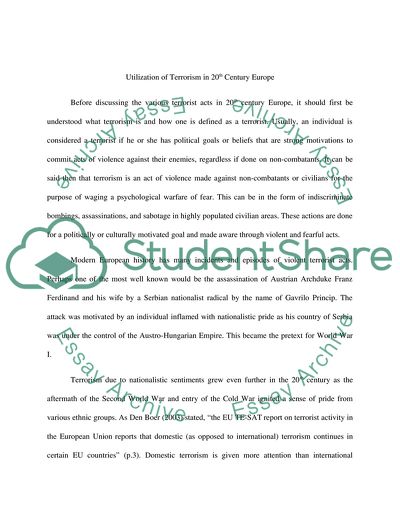Cite this document
(Utilization of Terrorism in 20th Century Europe Coursework, n.d.)
Utilization of Terrorism in 20th Century Europe Coursework. Retrieved from https://studentshare.org/military/1596616-terrorism-paper
Utilization of Terrorism in 20th Century Europe Coursework. Retrieved from https://studentshare.org/military/1596616-terrorism-paper
(Utilization of Terrorism in 20th Century Europe Coursework)
Utilization of Terrorism in 20th Century Europe Coursework. https://studentshare.org/military/1596616-terrorism-paper.
Utilization of Terrorism in 20th Century Europe Coursework. https://studentshare.org/military/1596616-terrorism-paper.
“Utilization of Terrorism in 20th Century Europe Coursework”. https://studentshare.org/military/1596616-terrorism-paper.


